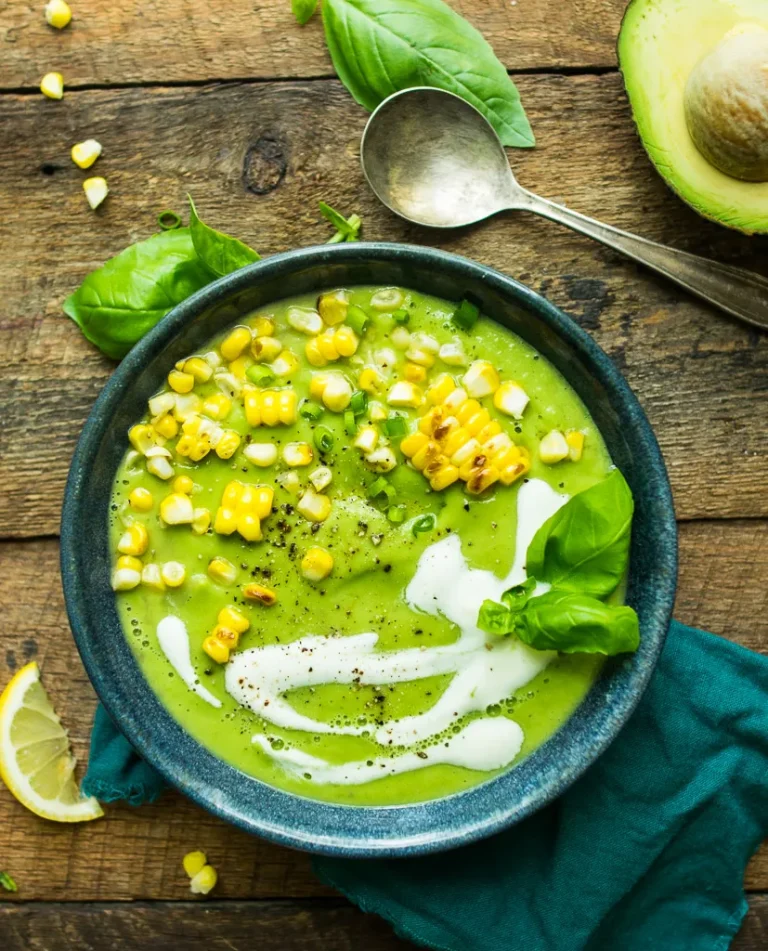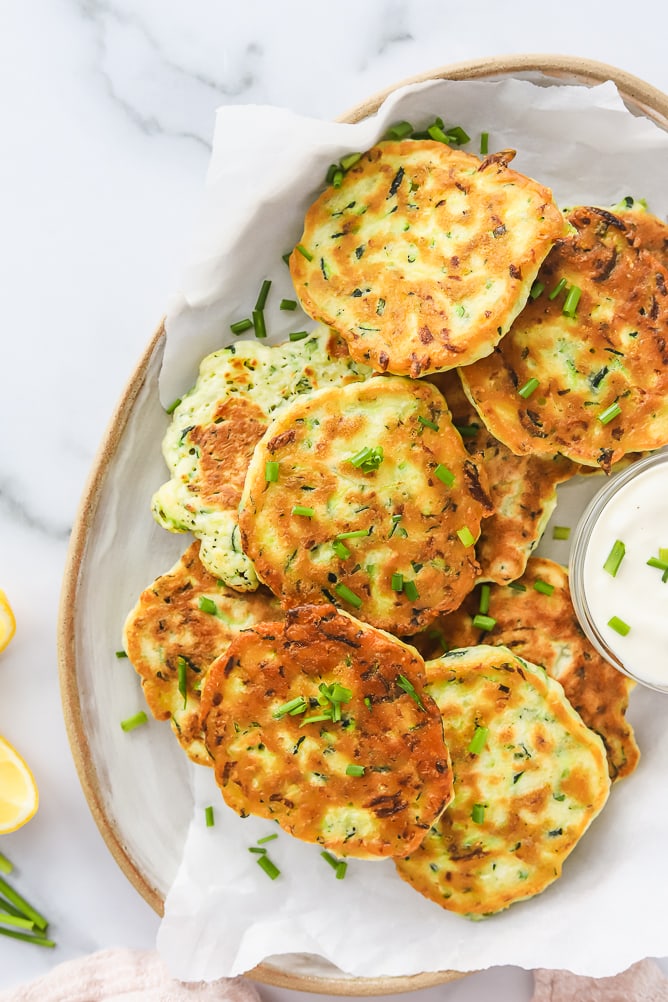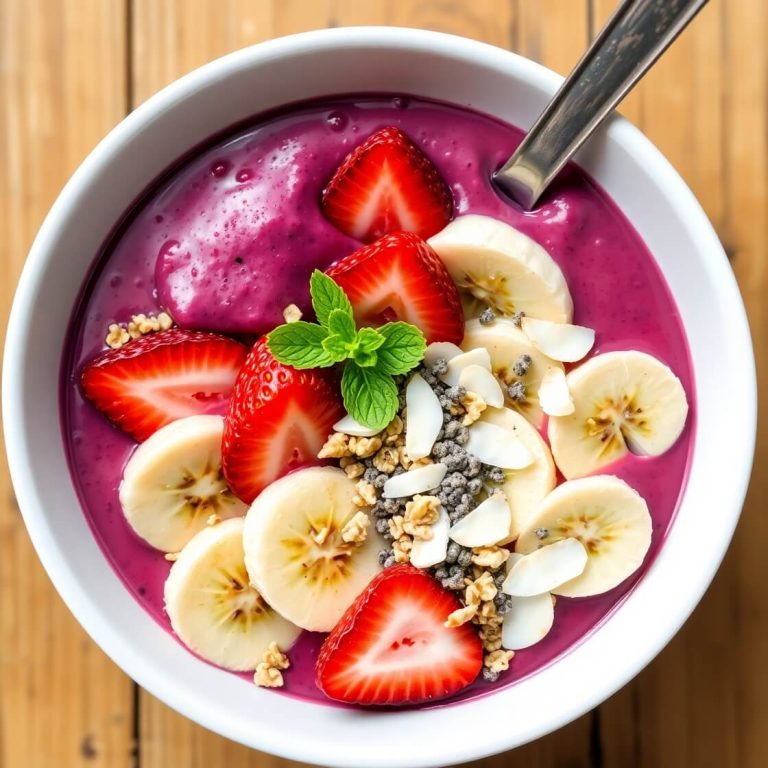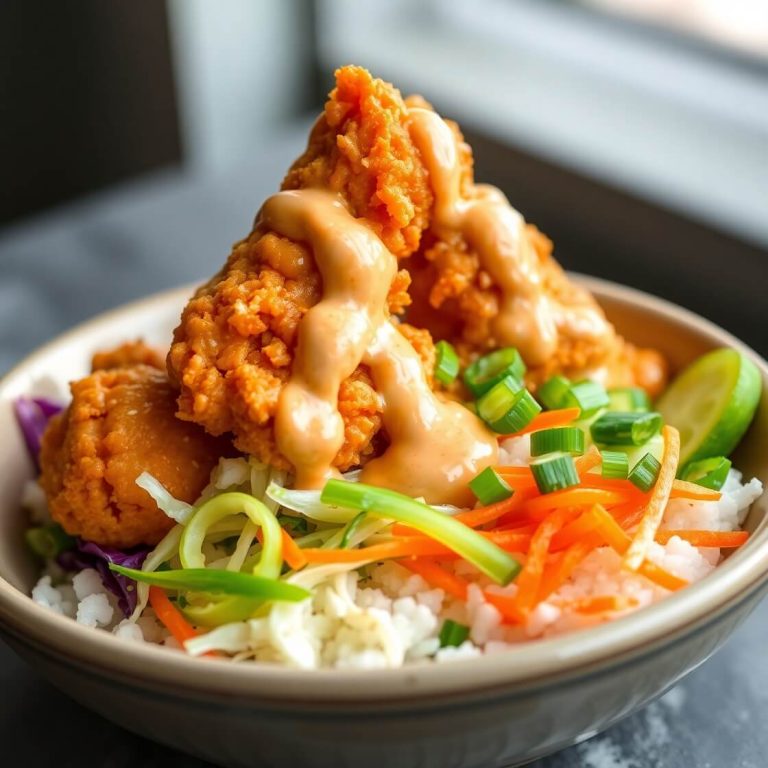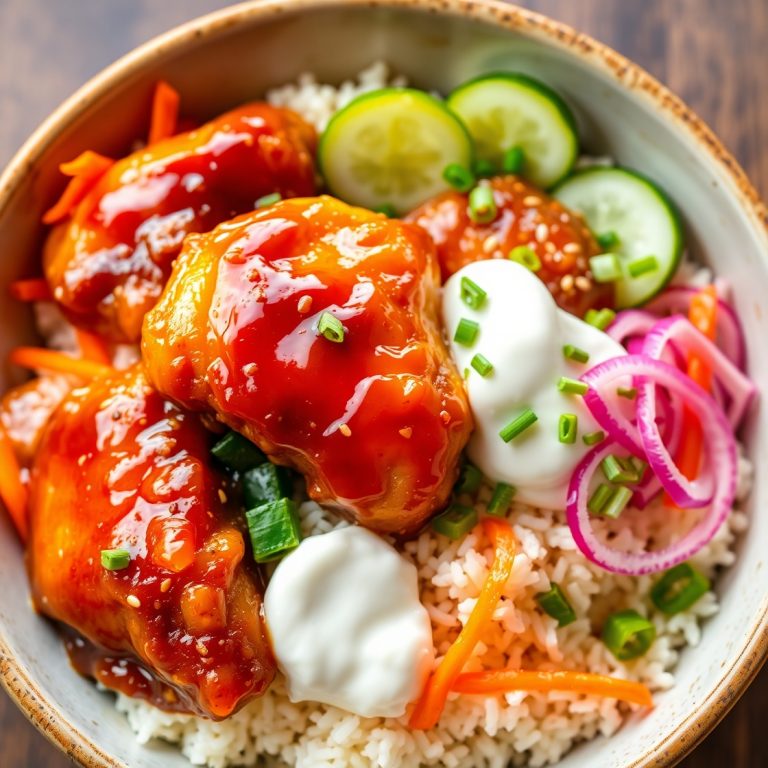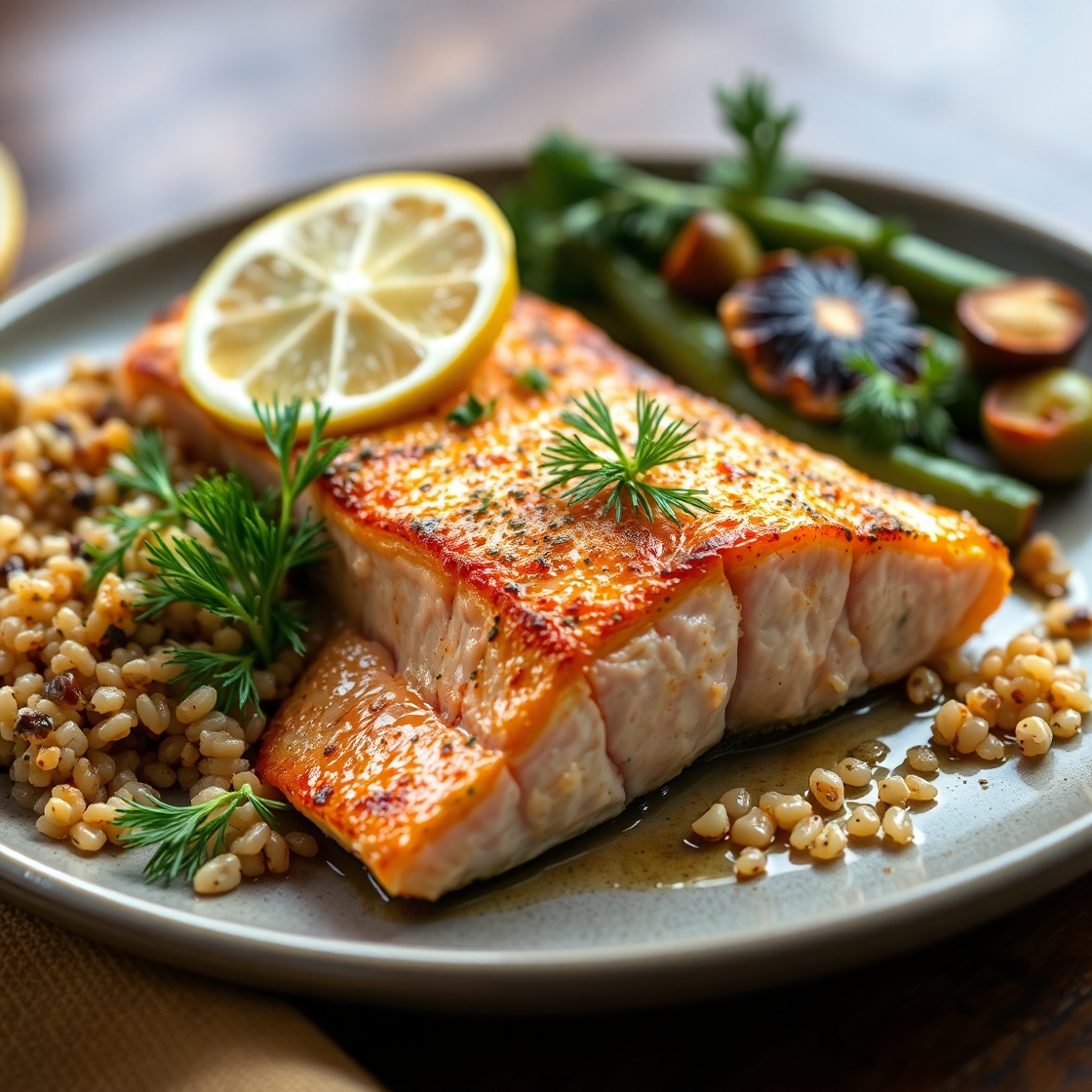
There’s something undeniably elegant about a perfectly cooked salmon dish. Whether it’s gently pan-seared, roasted until just flaky, or grilled with a crisped skin, salmon holds its place as one of the most beloved proteins for good reason.
I created this recipe guide to help anyone—whether you’re a kitchen beginner or a seasoned home cook—master the art of preparing salmon in a way that’s simple, flavorful, and completely satisfying. It’s not just about throwing a fillet in a pan. This is about layering flavor, balancing texture, and understanding how to elevate a naturally rich fish into a standout meal.
What makes this guide even better is that it’s not just one recipe. It’s a go-to salmon blueprint that allows flexibility based on your kitchen, time, and preferences. Think of it as the last salmon recipe guide you’ll need.
Read on if you’re looking for a reliable, deeply flavorful, and beautifully adaptable way to cook salmon at home—and keep coming back to it week after week.
Why I Love This Recipe
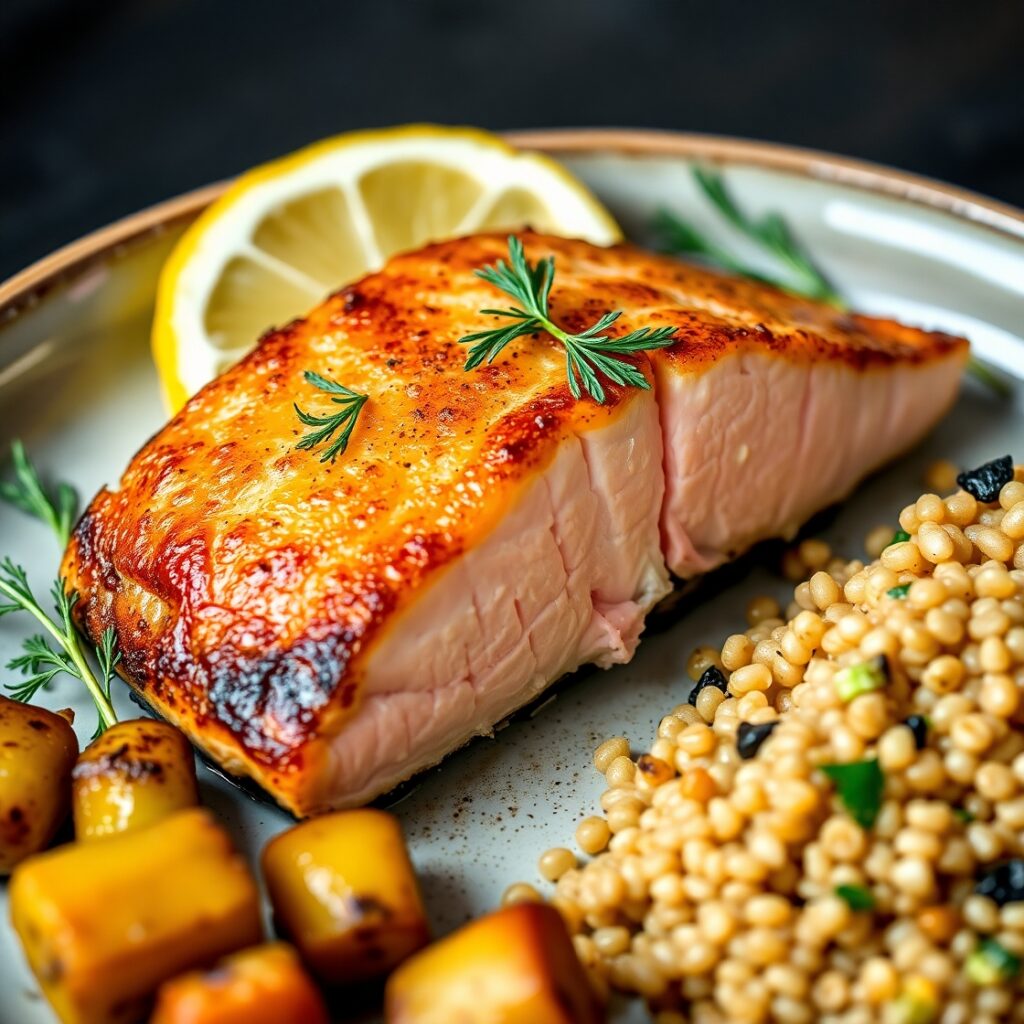
Salmon isn’t just a staple in healthy diets—it’s a culinary canvas. This recipe has become a favorite because it brings together everything that makes salmon special: its buttery texture, natural richness, and ability to hold up to bold flavors.
What makes this recipe unique is its adaptability. You can make it pan-seared on a busy weeknight, bake it with minimal cleanup, or grill it outdoors on a warm evening. The seasoning blend is simple yet punchy—garlic, lemon, herbs, and a touch of spice—that enhances the fish without overpowering it.
Another reason I love this recipe is the cooking technique. By starting the fish skin-side down and gently finishing it in the oven or on the stovetop, you get crispy skin and a perfectly cooked interior every time.
This isn’t just a salmon recipe. It’s a strategy for always having a reliable, crowd-pleasing dinner up your sleeve. It’s healthy, gluten-free, and high in protein—ideal for those following a low-carb or heart-healthy diet.
And most importantly? It never gets boring. The core method gives you consistency, while the flavors allow for creativity.
Ingredients for Salmon Recipes
When it comes to salmon, the ingredients you choose can completely change the final dish. The goal here is to highlight the fish, not mask it. You want freshness, balance, and a few ingredients that really shine.
Here’s what you’ll need:
Fresh Salmon Fillets
Choose center-cut fillets if you can—they’re uniform in size and cook evenly. Skin-on is ideal if you like crispy skin. Opt for wild-caught if available; it’s leaner and has a deeper flavor.
Olive Oil or Avocado Oil
Used for searing and flavor. Avocado oil has a higher smoke point if you’re pan-searing.
Garlic (minced)
Adds a deep aromatic note that pairs beautifully with salmon’s natural richness.
Lemon Zest and Juice
Brightens the dish and balances the fatty richness of the fish.
Dijon Mustard (optional)
Adds a layer of tangy sharpness. Great if you’re roasting or grilling.
Fresh Herbs
Dill, parsley, chives, or thyme all work. Choose one or two, not all—keep the flavors clean.
Sea Salt and Freshly Cracked Black Pepper
Essential for seasoning. Use generously.
Paprika or Smoked Paprika
Optional, but adds color and a subtle smokiness.
Honey or Maple Syrup (optional)
Just a tiny drizzle can balance everything out, especially if your salmon is particularly lean.
The best part? These are all pantry staples. Once you have them on hand, you’re never far from a flavorful salmon dinner.
How Much Time Will You Need?
Salmon is one of the fastest proteins to cook. Depending on your method and the thickness of your fillets, you can go from prep to plate in just about 25–30 minutes.
Here’s a quick breakdown:
Preparation Time: 10 minutes
Cooking Time: 10–15 minutes
Total Time: About 25–30 minutes
This makes it perfect for weeknights or impromptu dinner guests. It’s fast, forgiving, and delicious.
How to Make This Salmon Recipe
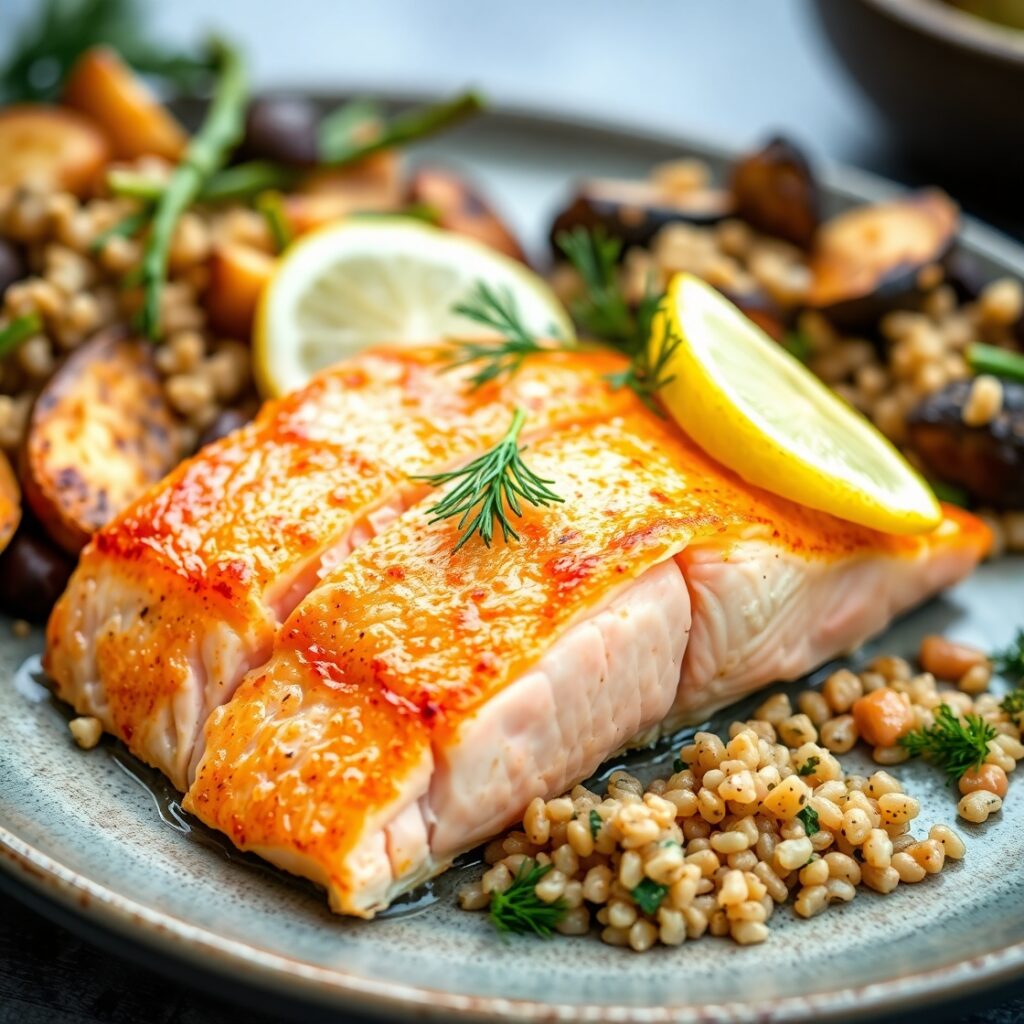
Let’s get into the cooking method. This is a fail-safe, delicious way to prepare salmon.
Step – 1: Choose and Prep Your Salmon
Start with 4 fillets (about 6 oz each). Pat the fillets dry with paper towels—this helps achieve a good sear.
Place them skin-side down on a plate or tray.
Season both sides generously with sea salt and black pepper. Rub in minced garlic, a light drizzle of olive oil, and zest from one lemon.
Let the salmon rest at room temperature for 10 minutes while you prep your pan.
Step – 2: Preheat Your Pan
Heat a heavy-bottomed skillet (preferably cast iron or stainless steel) over medium-high heat. Add a tablespoon of olive oil or avocado oil.
Once the oil shimmers, you’re ready to go.
Step – 3: Sear the Salmon
Place the fillets skin-side down in the hot pan. Press gently with a spatula for the first 30 seconds—this keeps the skin flat and prevents curling.
Cook for 4–5 minutes without moving the fillets. The skin should be crisp and the color should change about 3/4 of the way up the sides.
Step – 4: Flip and Finish
Flip the salmon gently and cook for 2–3 more minutes. If your fillets are thick, lower the heat and cover the pan for another minute to finish cooking.
The fish should be just opaque in the center and flake easily with a fork.
Optional: Squeeze fresh lemon juice over the fillets before serving.
Step – 5: Garnish and Rest
Remove salmon from the pan and let it rest for 2–3 minutes. Garnish with chopped fresh herbs and a final crack of black pepper.
Now it’s ready to plate.
Substitutions
Not everyone has access to the same ingredients—or the same preferences. Here are smart, flavor-conscious substitutions to help adapt this recipe:
No Fresh Salmon?
Use frozen fillets—just make sure they’re completely thawed and patted dry before cooking.
Instead of Olive Oil
Try avocado oil or grapeseed oil for high-heat cooking. Butter adds richness for oven-roasting.
No Dijon Mustard?
Use whole grain mustard or even a touch of horseradish cream for a different kind of zing.
Out of Fresh Garlic?
Substitute with 1/2 teaspoon garlic powder per fillet. It won’t be as aromatic but still adds depth.
No Fresh Herbs?
Use dried herbs sparingly. 1 teaspoon of dried dill or thyme can work in a pinch.
Want a Spicy Kick?
Add a pinch of cayenne or red pepper flakes to the seasoning.
This salmon recipe is resilient—small tweaks won’t ruin the outcome.
Best Side Dishes for Salmon Recipes
Pairing the right side dish with salmon can take your dinner from simple to sensational. Here are three favorites:
1. Garlic Parmesan Roasted Asparagus
Lightly crispy, garlicky, and perfect for soaking up any pan juices.
2. Herbed Quinoa Pilaf
A great grain option that’s gluten-free and full of flavor from shallots, lemon, and herbs.
3. Creamy Mashed Cauliflower
A low-carb, velvety side that balances salmon’s richness and adds comforting texture.
These sides work well for casual dinners or elegant gatherings alike.
Serving and Presentation Tips
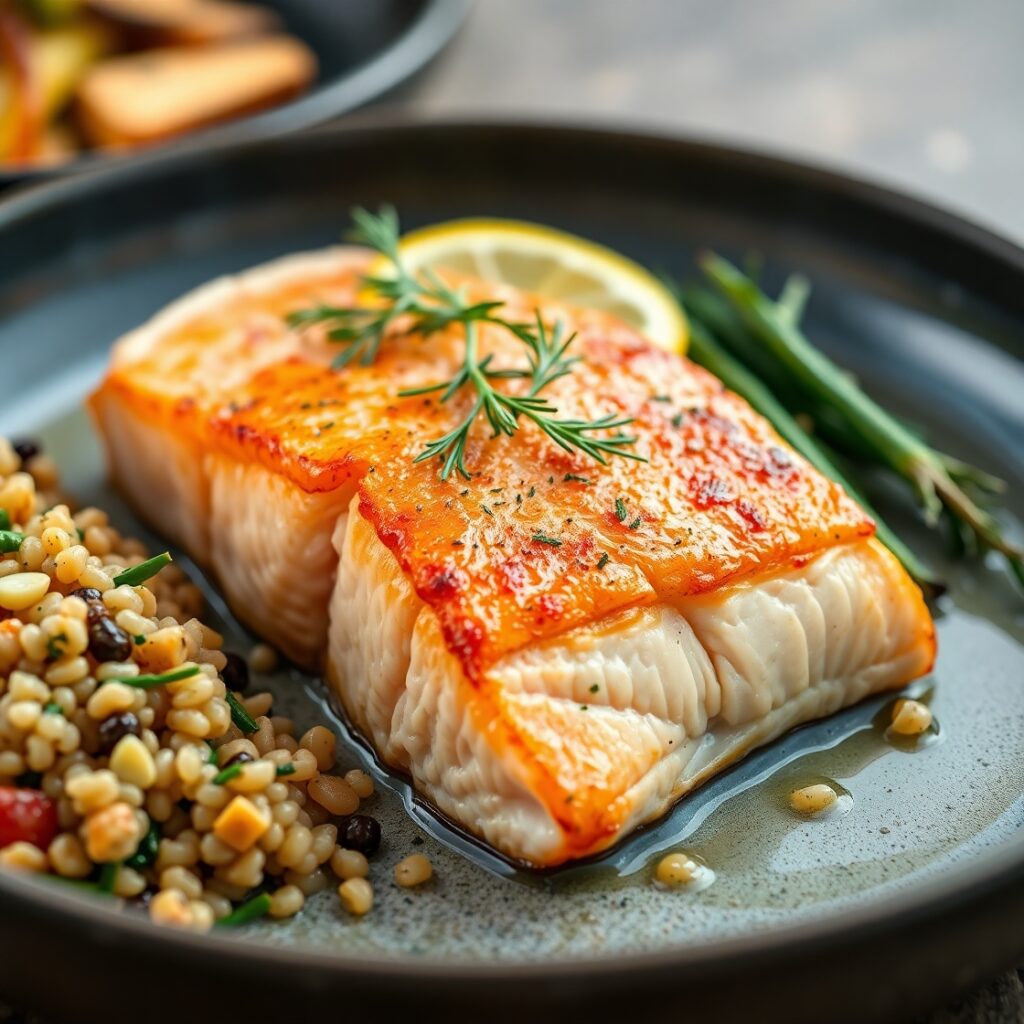
How you present salmon can completely transform how it’s received at the table. This is especially true when serving guests or trying to elevate a weeknight meal.
First, always serve salmon with the skin-side down unless it’s removed after cooking. This keeps the presentation clean and visually structured. Place it slightly off-center on the plate for a more elegant plating.
Add a pop of color with fresh herbs—dill, parsley, or chives—and thin lemon slices or wedges. A drizzle of extra virgin olive oil or a swirl of herbed yogurt sauce on the side can instantly lift the entire dish visually and texturally.
For side dishes, keep symmetry in mind. Spoon quinoa or cauliflower mash in a gentle arc on the side of the plate, and lean roasted vegetables at a slight angle against the salmon. This style mimics restaurant plating and makes a simple dish feel composed.
If serving on a platter for guests, lay salmon pieces skin-side down, garnished with fresh herbs and lemon slices in between. Surround with steamed or roasted vegetables to complete the look.
Clean edges, vibrant garnishes, and subtle drizzle of sauce—those are the visual keys to making this salmon recipe feel just a little more special.
Tips and Tricks to Make This Recipe Better
Here’s where the magic lives—tiny details that yield major improvements.
- Dry Your Fish Well: Before seasoning or searing, use paper towels to dry the surface. This ensures better caramelization and crispier skin.
- Use a Hot Pan but Don’t Rush It: Let your pan heat thoroughly before adding oil. A properly hot pan helps create a golden crust without sticking.
- Let the Fish Rest After Cooking: Just a few minutes of rest time before serving allows juices to redistribute, keeping the salmon moist and flavorful.
- Don’t Overcrowd the Pan: Cook salmon in batches if needed. Overcrowding reduces temperature and leads to steaming instead of searing.
- Invest in an Instant-Read Thermometer: Perfect salmon is cooked to 125°F (51°C) for medium. This little tool removes all the guesswork.
- Enhance with Compound Butters: Try finishing with a pat of lemon-herb butter or chili-lime compound butter for added richness and complexity.
- Change the Flavor Profile Easily: Swap lemon and herbs for soy sauce and sesame oil, or add Cajun spice for a smoky, spicy twist.
These tips make salmon not just good—but reliably great.
Common Mistakes to Avoid
Cooking salmon seems simple, but there are a few pitfalls to watch out for. Avoiding these common errors can be the difference between dry, flavorless fish and a juicy, restaurant-quality meal.
1. Cooking Straight from the Fridge
Let the salmon come to room temperature for about 15 minutes. Cold salmon can cook unevenly, resulting in a raw center and overcooked edges.
2. Skipping the Pat-Dry Step
Moisture prevents proper searing. Always pat the salmon dry before seasoning.
3. Overcooking
Salmon continues to cook after being removed from the heat. Aim for a soft flake and slight translucency in the center. Use a thermometer if unsure.
4. Moving the Fish Too Soon
If you try to flip salmon before it releases naturally from the pan, the skin will tear. Let it develop that golden crust first—then it’ll release easily.
5. Overseasoning or Using Too Many Flavors
Let the salmon’s natural richness shine. Choose a few bold flavors rather than layering too much seasoning.
How to Store It
Proper storage helps maintain the quality and safety of your leftover salmon.
Refrigeration
Allow the salmon to cool completely before transferring to an airtight container. Store in the fridge for up to 3 days.
Freezing
For longer storage, wrap the salmon tightly in plastic wrap and place in a freezer-safe container or bag. It keeps well for up to 2 months. Thaw overnight in the fridge before reheating.
Reheating
Reheat gently to avoid drying it out. Use the oven at 275°F (135°C) for about 10–15 minutes, or place it in a covered skillet with a splash of broth or water over low heat.
Avoid microwaving if possible—it tends to toughen the fish.
FAQ
Q1: Can I use frozen salmon for this recipe?
Yes! Just make sure it’s completely thawed and patted dry before cooking. Frozen wild-caught fillets work very well.
Q2: How do I know when my salmon is fully cooked?
Look for opaque flesh that flakes easily with a fork and a slightly translucent center. Use an instant-read thermometer to check for 125°F (51°C) for medium.
Q3: Is it okay to eat the skin?
Yes, salmon skin is safe and tasty when crisped properly. Just be sure to scale the skin if not pre-cleaned.
Q4: Can I bake this instead of pan-searing?
Absolutely. Preheat oven to 400°F (205°C) and bake for 10–12 minutes, depending on thickness.
Q5: What sauces go well with salmon?
Lemon butter, dill cream, honey mustard glaze, or garlic yogurt sauce are all great. Keep it light to complement the richness of the fish.
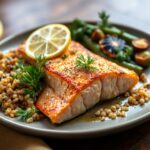
Salmon Recipes
- Total Time: 25 minutes
- Yield: 4 servings
- Diet: Gluten Free
Description
This easy, foolproof salmon recipe gives you crispy skin, juicy flaky flesh, and flavor that works every time. Made with simple, fresh ingredients and ready in just 30 minutes, it’s the kind of dish you’ll come back to again and again. Whether you’re cooking for guests or prepping a healthy weeknight meal, this recipe delivers consistent, impressive results—every time. It’s adaptable, fast, and packed with clean, vibrant flavors that let the natural richness of salmon shine through.
Ingredients
- 4 salmon fillets (6 oz each), skin-on
- 1 tablespoon olive oil or avocado oil
- 2 garlic cloves, minced
- Zest of 1 lemon
- Juice of 1/2 lemon
- Sea salt, to taste
- Freshly cracked black pepper, to taste
- 1 teaspoon Dijon mustard (optional)
- 1 tablespoon chopped fresh dill or parsley
- Optional: pinch of paprika or red pepper flakes
Instructions
- Pat the salmon fillets dry and let sit at room temperature for 10 minutes.
- Season with salt, pepper, garlic, lemon zest, and olive oil.
- Heat a large skillet over medium-high heat. Add oil.
- Place salmon skin-side down. Press gently to avoid curling. Cook for 4–5 minutes.
- Flip carefully and cook for 2–3 more minutes until just opaque in the center.
- Squeeze lemon juice over the top. Let rest 2 minutes before serving.
- Garnish with fresh herbs and serve with desired sides.
Notes
Don’t skip the resting time—it’s crucial for juicy fish.
Feel free to use this as a base for other seasonings or sauces.
Leftovers make great salad toppers or sandwich fillings.
- Prep Time: 10 minutes
- Cook Time: 15 minutes
- Category: Main Course
- Method: Pan-seared
- Cuisine: American
Nutrition
- Serving Size: 1 salmon fillet (6 oz)
- Calories: 295

